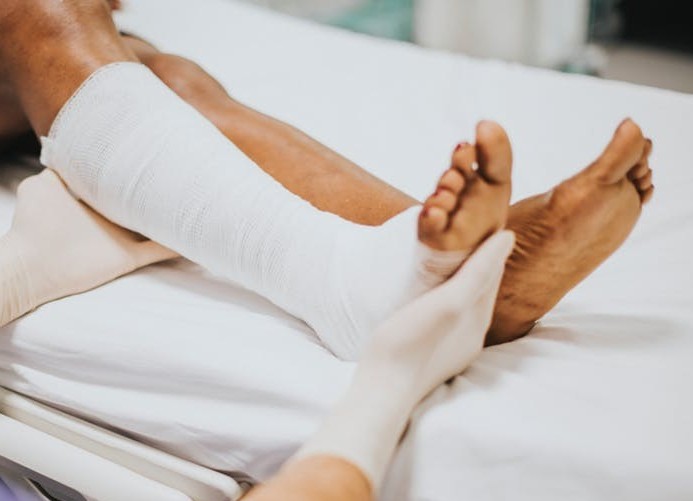In this article on foot problems that dancers have to contend with, let’s have a look at Metatarsal Stress Fractures and Plantar Fascitis.
Foot Problems Dancers Suffer From
Metatarsal Stress Fractures
Almost all stress fractures are caused by overuse or overworking of those specific body parts. Stress fractures can occur in any bone of the foot, ankle, knee, hip or spine.
The base of the second metatarsal is the most common place for ballet dancers to get stress fractures. Stress fractures won’t normally show up on an X-ray, but will normally be picked up with an MRI or bone scan. The symptoms of stress fractures can include pain, tenderness, and soreness in the middle of the foot or feet.

Dancers that are most prone to stress fractures in their feet normally have rigid and highly arched feet with long second metatarsals. Poor nutrition can also cause hormonal and metabolic deficiencies, which ultimately lead to injuries.
Full recovery after a stress fracture is very slow and can take as long as four months from when the treatment begins. At first, you will need to take a complete break from dancing, but as you feel better, you can resume gentle ballet barre movements and avoid things like releves and jumps until you are totally free of pain.
Avoid stress fractures by avoiding intense increases in your dancing schedules. Make sure that your ballet shoes offer you ample support for your feet. If you feel any pain in your feet stop dancing immediately, although this is often easier said than done.
Plantar Fascitis
The plantar fascia is a firm and fibrous tissue on the underside of the foot that joins the front inner aspect of the heel to the base of the toes. The plantar fascia supports the arch of the foot and when the ballet dancer is on demi pointe the plantar fascia is pulled taut which helps support, raise and stabilize the arch of your foot.
Plantar Fascitis is an inflammation of the plantar fascia and the main symptom is a pain on the bottom of the foot when getting out of bed in the morning and putting weight on it. The sharpest pain will normally be at the heel.
The treatment of this ailment is rest, rest, and more rest.
Alternate between warm and cold foot baths and stay off your feet as much as possible. Stretching and calf massages may also help. Once a bit better gradually increase your activity levels and put ice on your feet after dancing class.
Supportive elastic tape wrapped around the arches will also help. If necessary have some physical therapy which includes ultrasound and massage. Wear sturdy shoes and no jumping until your feet are pain-free.
In order to prevent plantar fascitis happening to you, do toe strengthening exercises and calf stretches. Rolling in at the ankle is a no-no and if you are prone to rolling inwards, you may need some orthotics for your street shoes. Avoid walking barefoot if you are prone to this and try to wear cushioned footwear with a slight heel.
Looking after your body and your feet will go a long way to ensuring you have a long and pain free ballet dancing career and you will possibly avoid foot problems.
